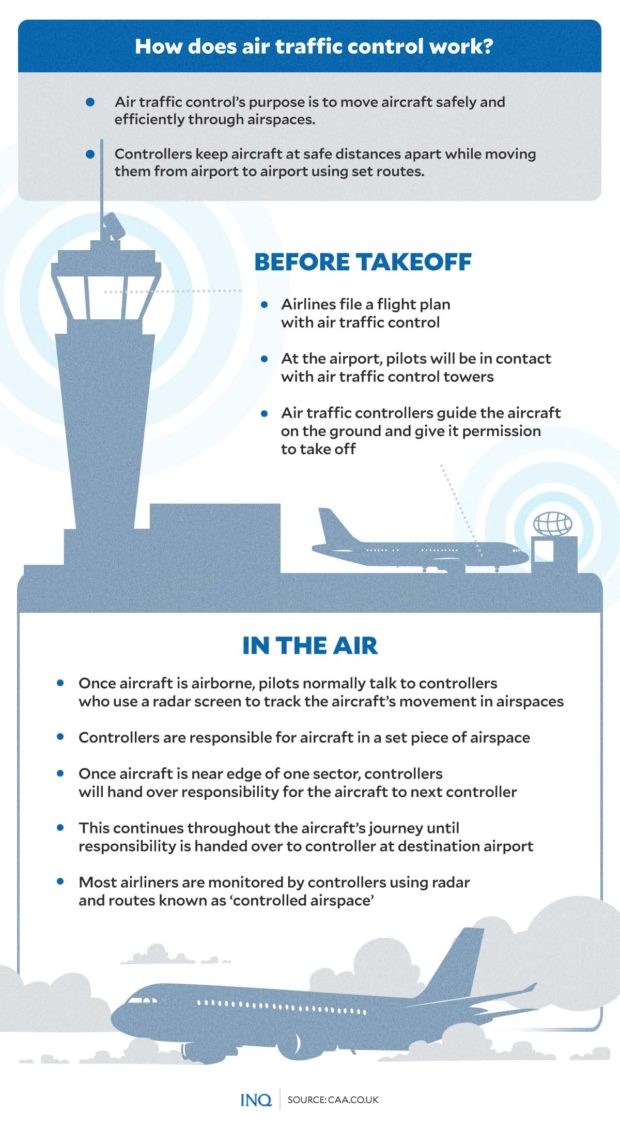Air traffic control fiasco probe ongoing; sabotage, negligence not ruled out–CAAP

(GRAPHIC: Ed Lustan)
MANILA, Philippines — The Civil Aviation Authority of the Philippines (CAAP) on Thursday said that it is still conducting its internal investigation on the foasco that crippled the country’s air traffic control system which resulted in the suspension of flights nationwide on New Year’s Day, adding that it has not yet ruled out other possible causes such as sabotage and human error.
“As of the moment we are still continuing the process, you see in our CNS/ATM (Communications, Navigation and Surveillance Systems for Air Traffic Management) we have so many equipment we have to go through step by step,” said CAAP Director General Edgardo Diaz in an interview over ANC’s Headstart.
“This includes all the lines that lead to the power of our CNS/ATM. It will take time but as soon as we finish and pinpoint the problem we will inform the public,” he added.
According to Diaz, while the department has initially identified the CNS/ATM’s uninterruptible power supply (UPS) as the culprit behind the glitch, it has yet to rule out other factors like sabotage and human negligence.
“It is [still] part of the investigation. We cannot rule out all of the possibilities, including cyber[crime], sabotage, failure of equipment, and so forth. We are not ruling out anything at this point,” he said.
Article continues after this advertisementFurther, Diaz said that human error has also not been ruled out.
Article continues after this advertisement“I cannot say that it is part of negligence [or a bad judgment call], but it is part of the investigation, that is not being ruled out, everything is being considered,” he said.
“Though it is quite remote, the possibility will always be there so we cannot rule it out entirely,” he added.
Diaz, however, said that engineers have so far determined that it “is most likely a material failure,” making the UPS the center of the internal investigation.
“But as I’ve said, because these power plants involve a lot of equipment, we are looking step by step at all of the equipment involved,” Diaz said.
When asked why these problems weren’t detected earlier, Diaz explained that CAAP duty engineers carry out preventive maintenance on the equipment involving the CNS/ATM daily, but the system did not show any abnormalities at that time.
No deadline
Meanwhile, Diaz did not give a deadline nor a timeline on the duration of the investigation, stressing the complexity of the systems and the need to explore all possible causes of the glitch.
“Very difficult to give a deadline because as we find things — initially they found something wrong with the UPS, but now other aspects are being taken into account because the UPS before it shuts down there should be a reason why,” said Diaz.
“So now they’re going towards that direction, what was the shutdown? And that will take time because as I’ve said, they’d have to check a lot of things,” he added.
At least 56,000 travelers were affected when 361 flights to and from Manila were either canceled, diverted, or delayed on January 1 due to the said technical glitch.
CAAP then admitted on Monday that its equipment is outdated.
RELATED STORIES:
Jan. 1, 2023, the day PH airspace went blank, strips mask off air travel woes, outdated system
Senate probe into New Year’s Day PH air traffic snag sought
CAAP welcomes probe into New Year PH air traffic hitch